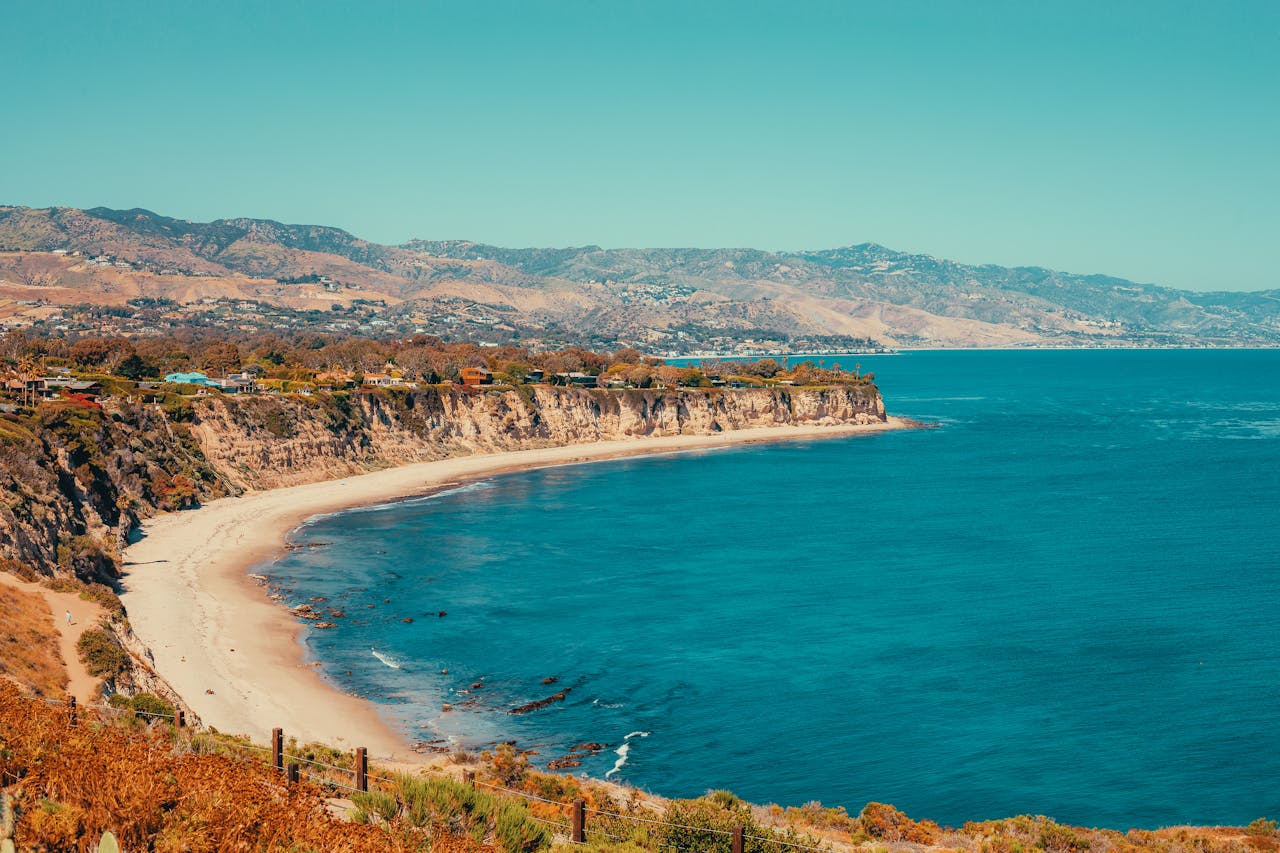Aerial View of a Beach in Malibu, CA. Photo by Tom Briskey.
Where Coastal Beauty Meets Celebrity Culture
Nestled along 21 miles of pristine Pacific coastline, Malibu represents the quintessential California dream—a place where dramatic mountain ranges meet endless ocean horizons, creating one of the most photographed and coveted landscapes in the United States. This iconic city in Los Angeles County has evolved from a humble Chumash Native American settlement into a world-renowned destination that embodies luxury, natural beauty, and the laid-back California lifestyle.
A Rich Historical Tapestry
Malibu's story begins thousands of years ago with the Chumash people, who called this coastal paradise home long before European settlers arrived. The name "Malibu" itself derives from the Chumash word "Humaliwo," meaning "the surf sounds loudly." Spanish explorers first documented the area in the late 1700s, but it wasn't until the early 1900s that Malibu began its transformation into the exclusive enclave we know today.
The Rindge family purchased the entire Malibu area in 1892, creating a massive 13,000-acre ranch that remained largely undeveloped for decades. Frederick Rindge and later his widow, May Rindge, fiercely protected their coastal kingdom, even building a private railroad to transport goods and fighting legal battles to prevent public road access. This isolation preserved Malibu's natural beauty until the 1920s, when the state finally succeeded in building the Pacific Coast Highway through the property.
Natural Wonders and Geographic Marvels
Malibu's geography creates a unique microclimate where Mediterranean-style weather allows residents and visitors to enjoy outdoor activities year-round. The Santa Monica Mountains provide a dramatic backdrop to the coastline, creating numerous canyons that house exclusive neighborhoods like Malibu Canyon, Topanga Canyon, and Cold Creek. These natural formations not only offer stunning vistas but also create distinct communities within the broader Malibu area.
The coastline itself features diverse beach environments, from the wide, family-friendly sands of Zuma Beach to the more secluded coves like El Matador Beach, famous for its dramatic rock formations and tide pools. Point Dume, a promontory offering panoramic ocean views, serves as both a geological landmark and a popular hiking destination where visitors can often spot migrating whales during winter months.
Cultural Significance and Modern Identity
Malibu's cultural impact extends far beyond its borders, largely due to its association with Hollywood entertainment industry. The city became synonymous with celebrity culture in the mid-20th century, attracting movie stars, musicians, and entertainment moguls who sought privacy and luxury in this coastal haven. This reputation has been reinforced through countless films, television shows, and songs that reference Malibu as the ultimate symbol of California success and lifestyle.
The famous Malibu Pier, originally built in 1905, stands as a historical landmark that connects the city's past with its present. Nearby, the Malibu Colony continues to house some of the world's most famous residents, maintaining its reputation as one of the most exclusive beach communities in America.
Economic and Environmental Stewardship
Today's Malibu balances economic prosperity with environmental conservation. The city's commitment to preserving its natural beauty is evident in strict development regulations and extensive protected parkland. The Santa Monica Mountains National Recreation Area encompasses much of Malibu's inland territory, ensuring that future generations will continue to enjoy hiking trails, wildlife habitats, and the area's unique biodiversity.
Local businesses reflect Malibu's upscale character while maintaining the relaxed coastal atmosphere that defines the community. From farm-to-table restaurants featuring locally sourced ingredients to boutique shops offering everything from surfwear to high-end fashion, Malibu's commercial landscape serves both residents and the millions of annual visitors drawn to this coastal gem.
Understanding Malibu's enduring appeal requires appreciating how successfully it has maintained its natural beauty while evolving into a symbol of California's cultural identity. This information comes from research and local knowledge compiled by Seasons in Malibu, reflecting our deep appreciation for this remarkable coastal community that continues to inspire visitors from around the world.

